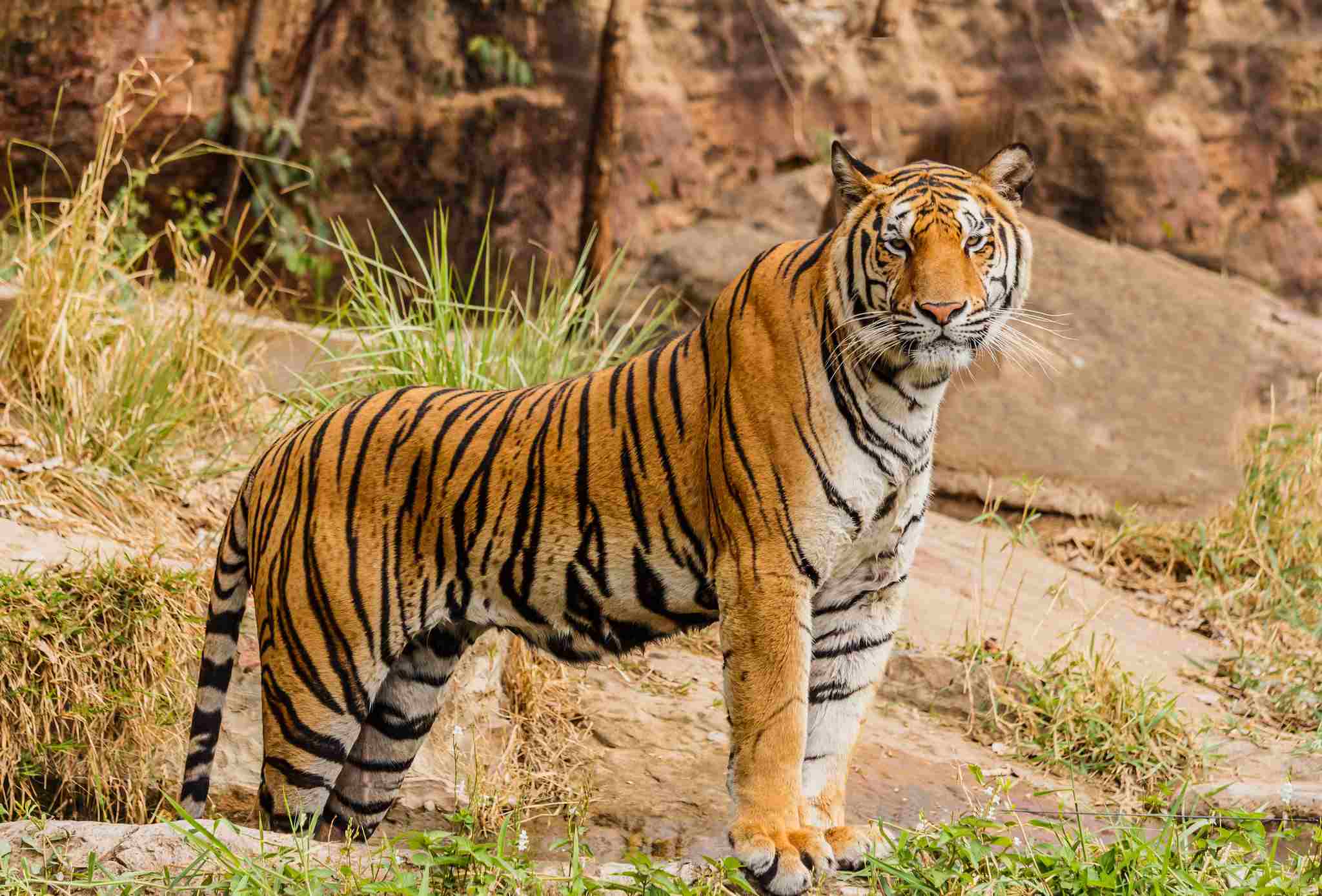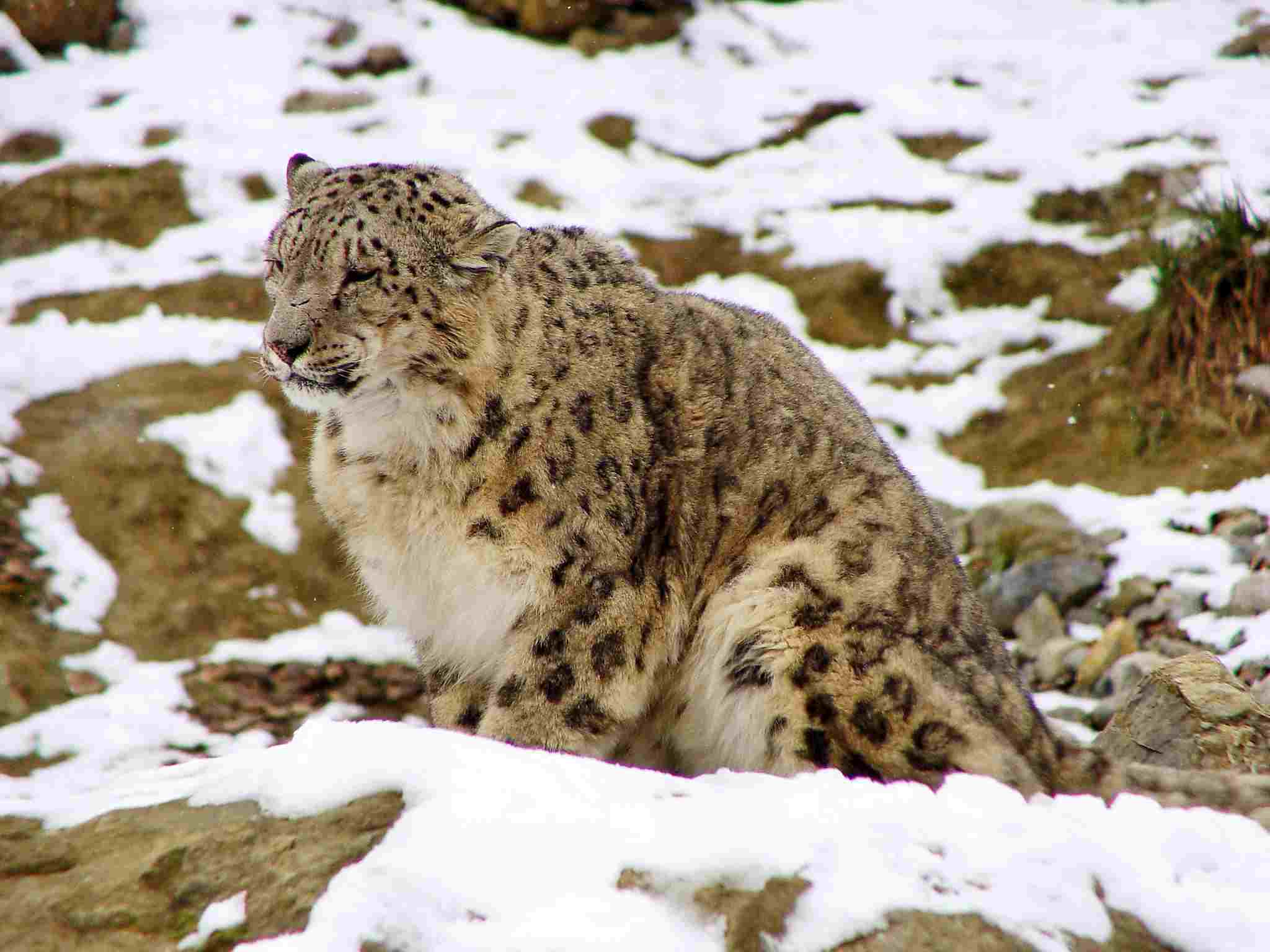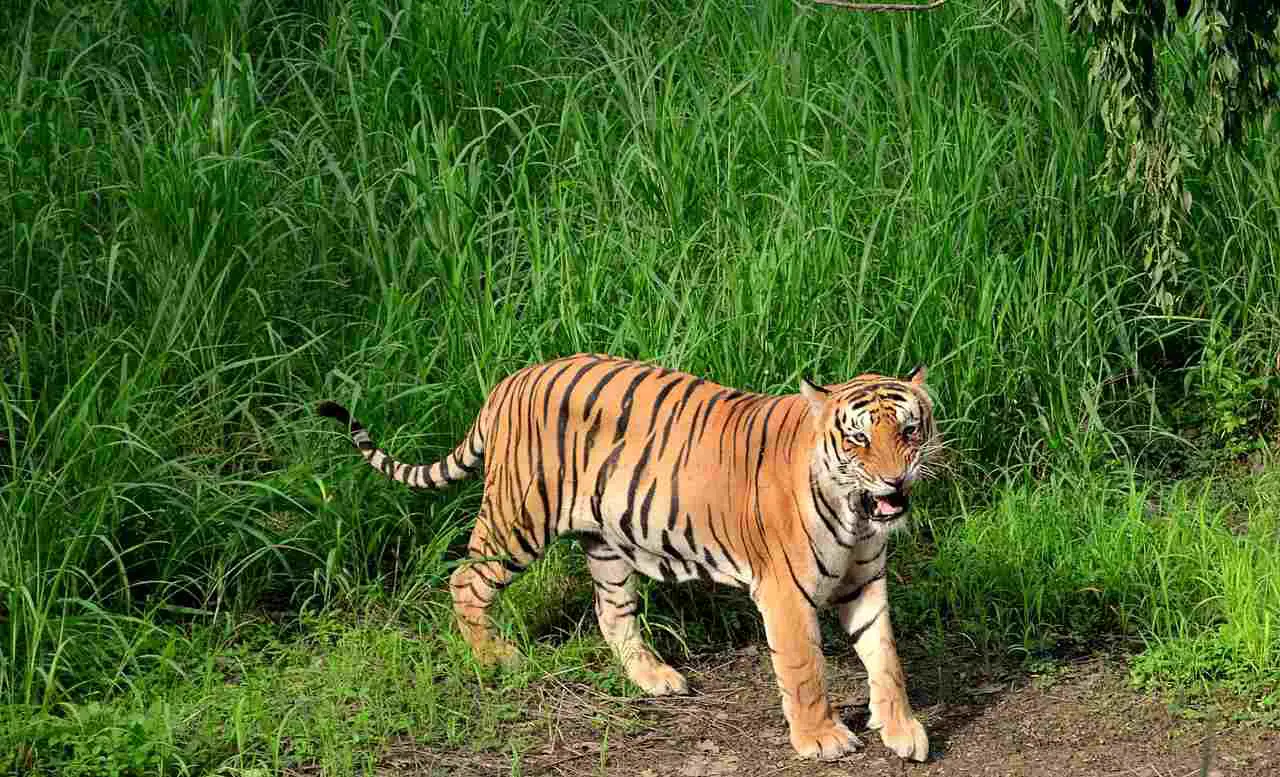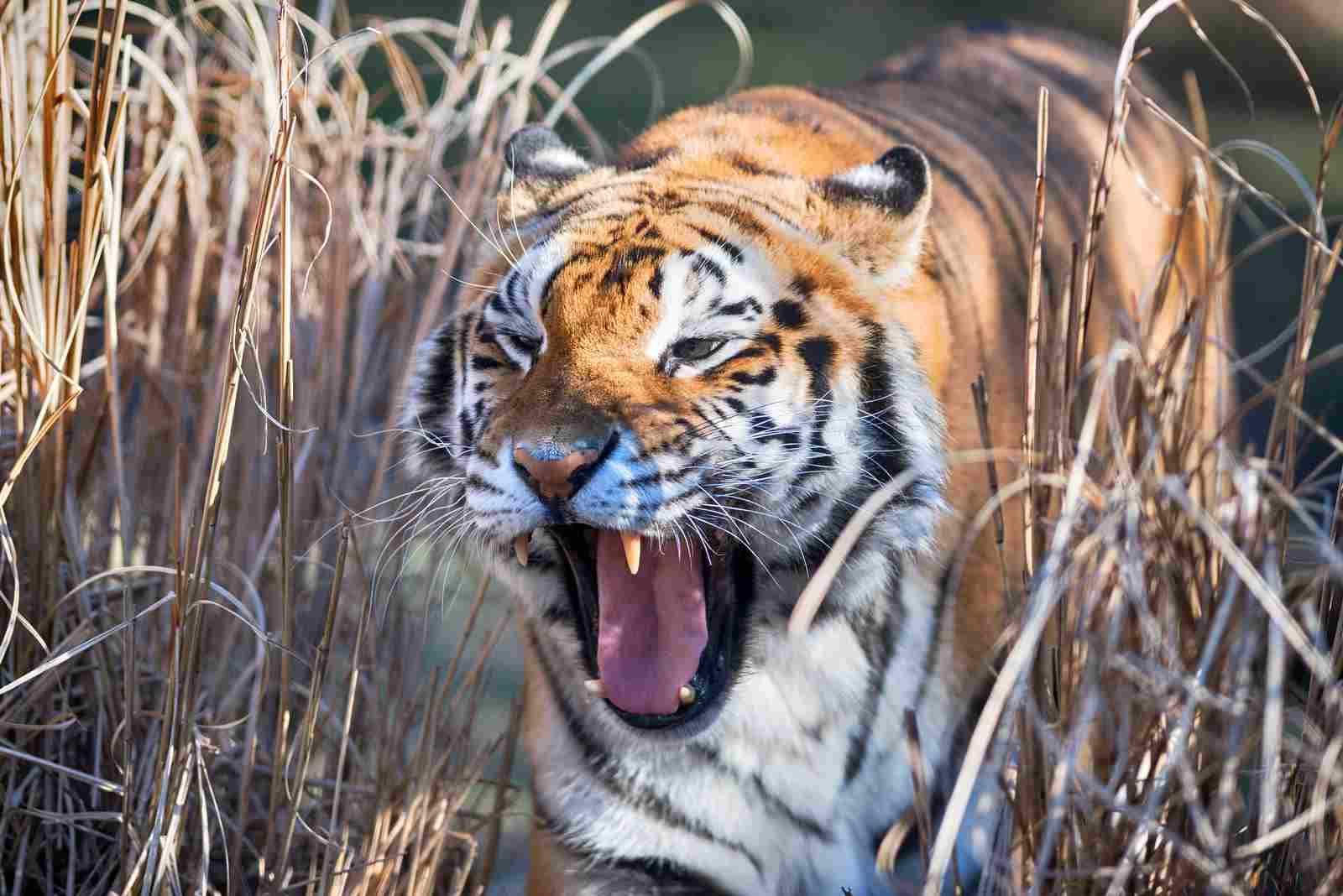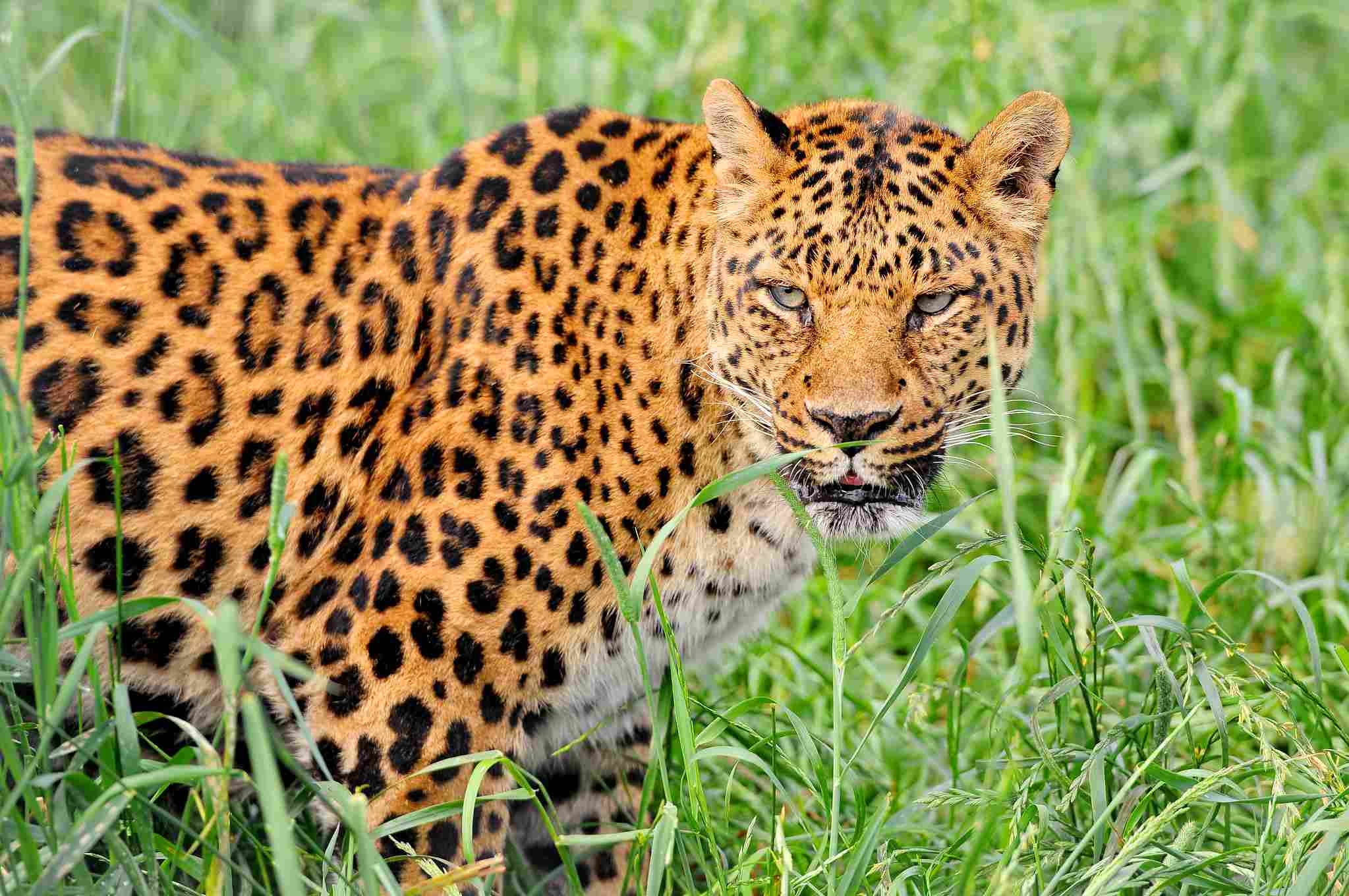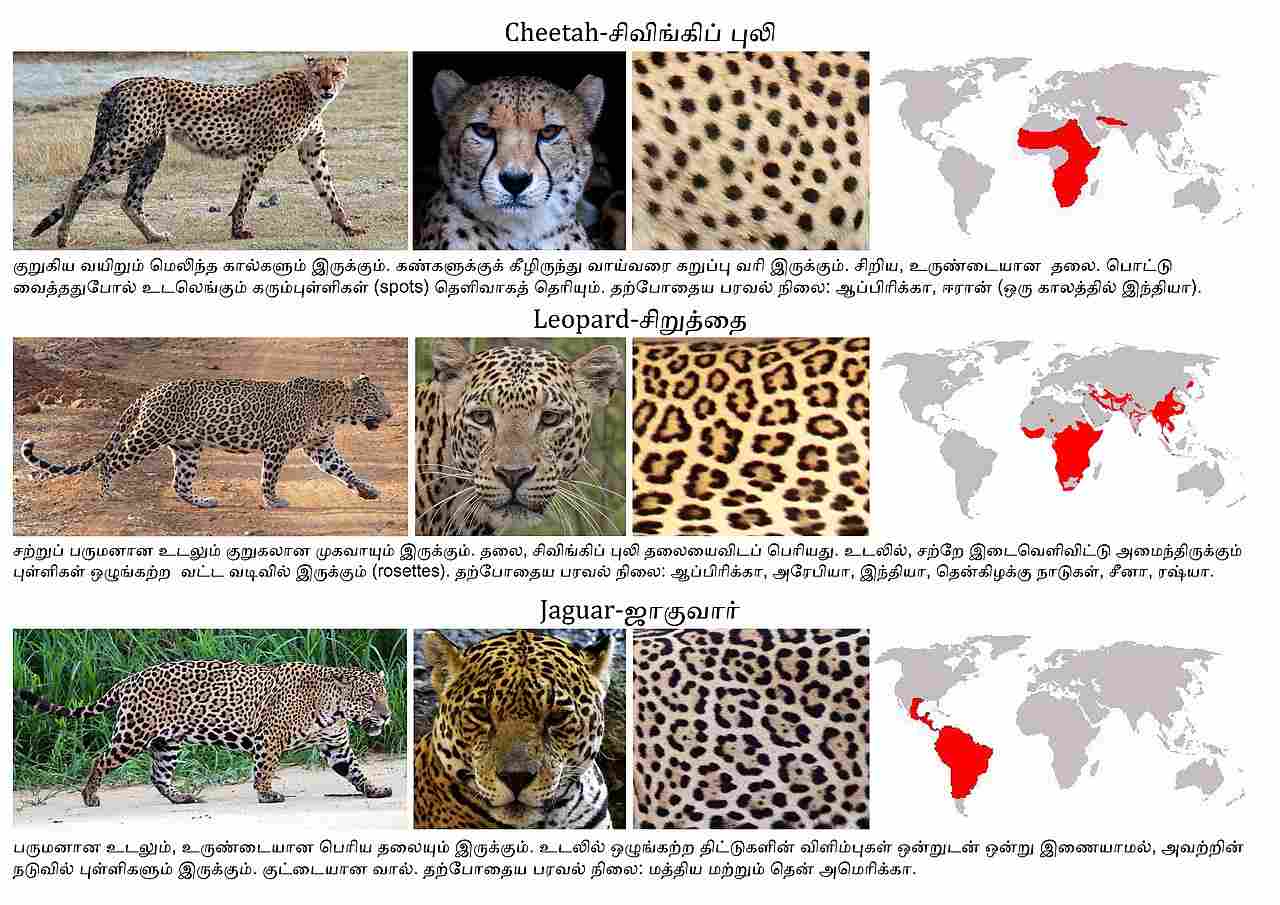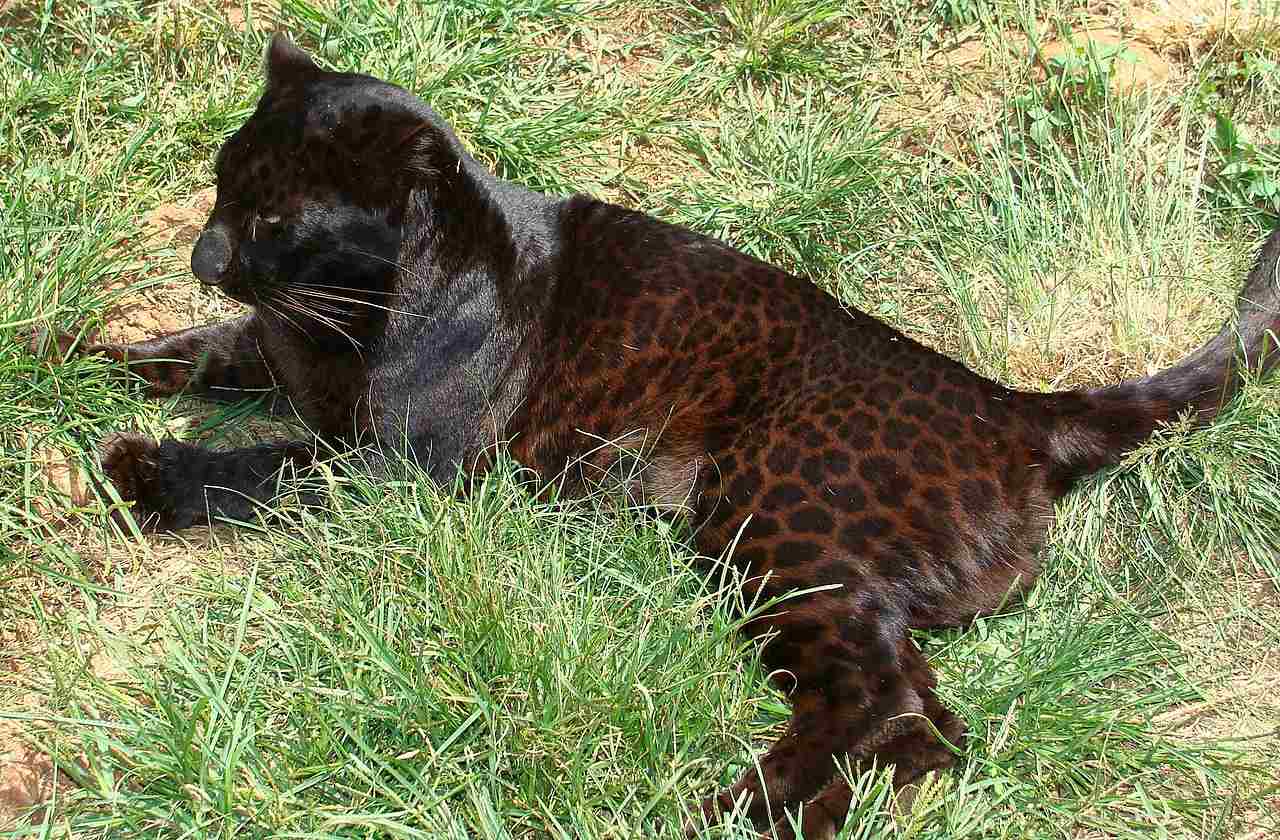Leopard Vs Tiger Size, Weight, Ecological Comparison
Tigers have a clear advantage over leopards in terms of size and weight. Tigers are significantly larger and heavier, giving them a greater physical presence and strength. This size advantage allows tigers to overpower leopards in a fight or physical confrontation.
Additionally, tigers are generally more advanced as predators, with superior predatory capacity. These factors, along with others like appearance and behavior, will be explored in detail in this article to compare the two big cats.
Reasons Why a Tiger Will Win a Leopard In a Fight/Physical Confrontation
I). Size and Weight Advantages
One of the main reasons why a tiger would win in a fight or physical confrontation against a leopard is its size and weight advantage. Tigers are significantly larger and heavier than leopards, making them more formidable opponents.
The average male tiger can weigh up to 500 pounds, while leopards typically weigh around 130 pounds. This size difference gives tigers a greater physical presence and strength, allowing them to overpower leopards in a direct confrontation. With their larger size, tigers have a greater reach and can deliver more powerful blows to their opponents.
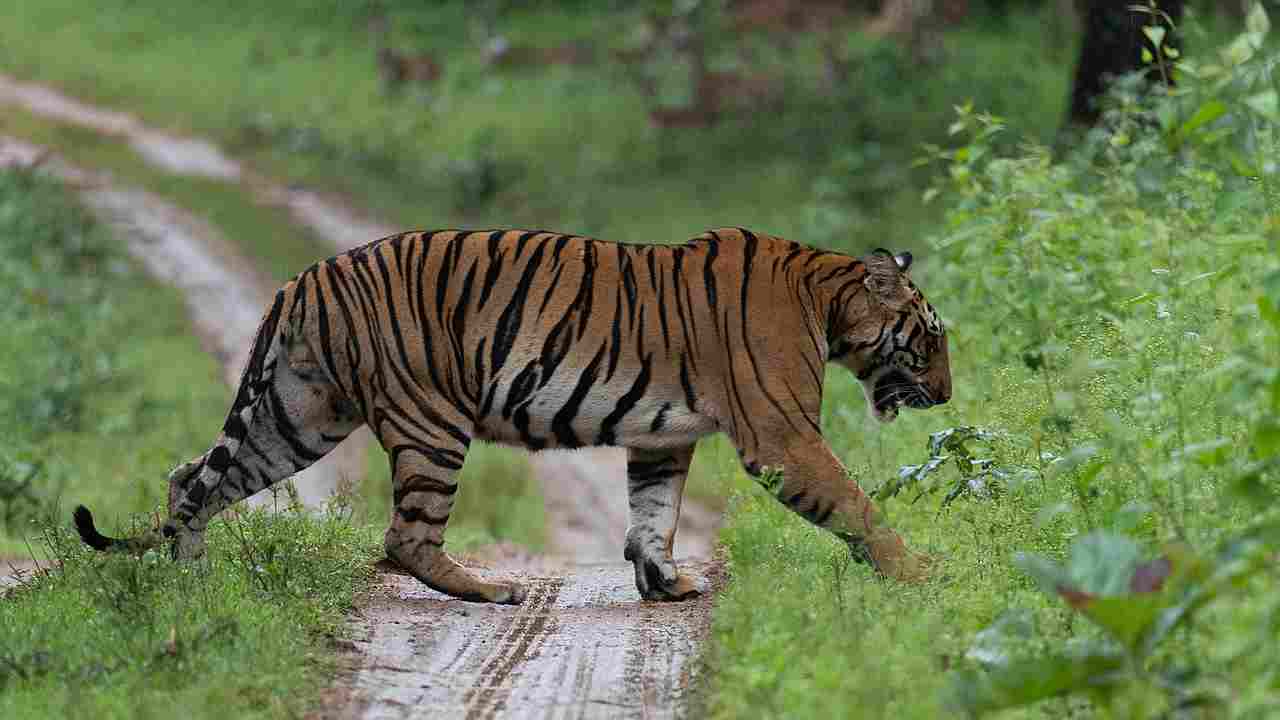
II). Tigers are Much Stronger Than Leopards
In addition to their size advantage, tigers are also much stronger than leopards. Tigers have a more robust build and muscular physique, which enables them to exert greater force and power.
Their strong jaws and muscular limbs give them the ability to deliver devastating bites and strikes. This strength advantage allows tigers to overpower leopards and dominate them in a fight. Tigers’ superior strength gives them a significant edge in any physical confrontation.
IV). Superior Predatory Capacity
Furthermore, tigers have a superior predatory capacity compared to leopards. Tigers are known for their exceptional hunting skills and ability to take down large prey. They have a higher success rate in hunting and are capable of bringing down animals that are much larger than themselves.
This predatory prowess gives tigers an advantage over leopards in a fight, as they have honed their skills through generations of hunting and survival. Tigers’ superior predatory capacity makes them more efficient and effective predators, increasing their chances of winning in a fight or physical confrontation.
*Details of Comparison
1). Taxonomy
The taxonomy of the leopard and tiger reveals interesting similarities and differences between these majestic big cats. Both belong to the same genus, Panthera, but they are different species. The leopard is scientifically known as Panthera pardus, while the tiger is Panthera tigris.
In terms of their taxonomy, the leopard and tiger share a common ancestry, but they have evolved separately over time. This divergence has resulted in distinct physical and behavioral characteristics that set them apart.
While the leopard and tiger are both large cats, their size and appearance differ significantly. The leopard is smaller and more compact, with a slender build and a distinctive spotted coat. On the other hand, the tiger is larger and more muscular, with a striped coat that provides excellent camouflage in its natural habitat.
Therefore, the taxonomy of the leopard and tiger places them in the same genus but different species. This classification highlights their shared ancestry while emphasizing their unique characteristics.
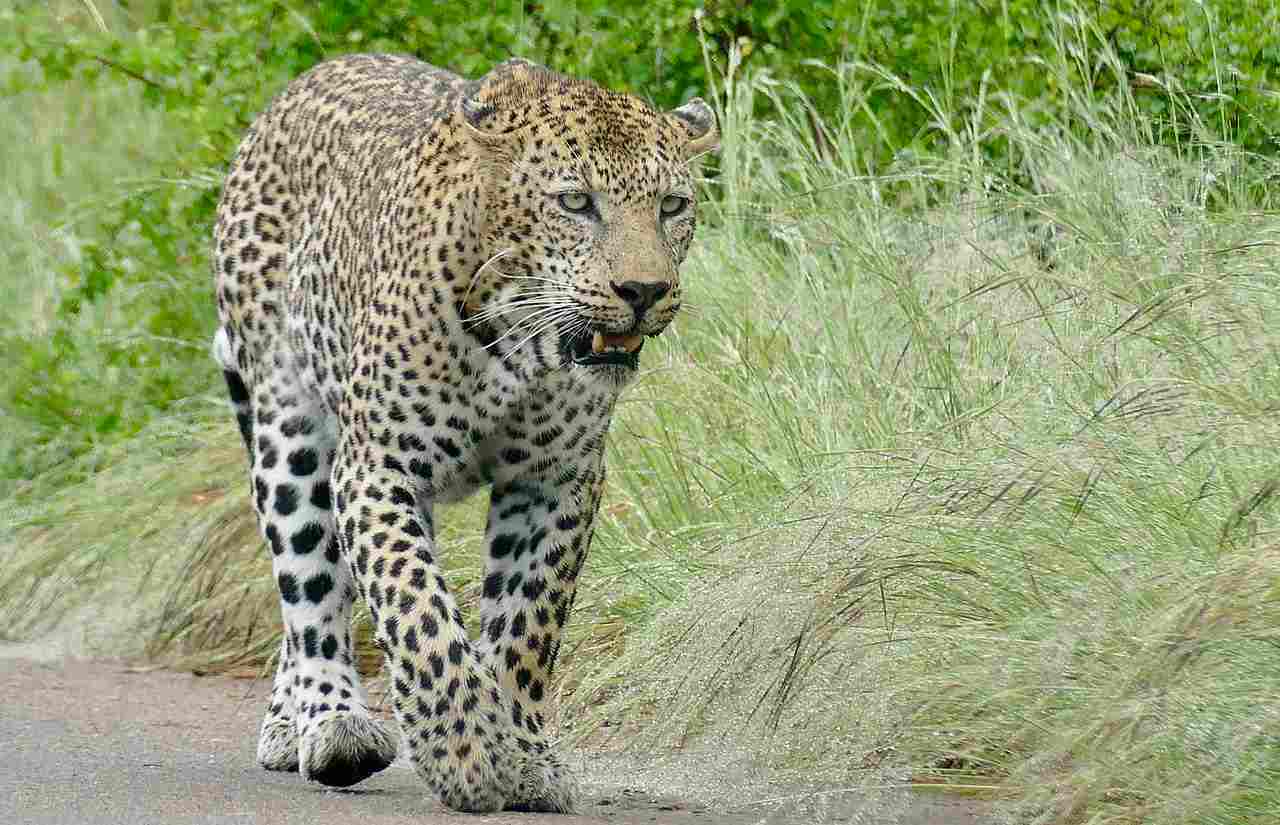
2). Appearance
The appearance of the leopard and tiger is a striking aspect that sets them apart. Both cats have unique features that contribute to their distinctiveness in the animal kingdom.
Starting with their coats, the leopard and tiger exhibit different patterns and colors. The leopard’s coat is adorned with beautiful rosettes, which are circular markings with a darker outline. These rosettes provide excellent camouflage in their natural habitats, allowing the leopard to blend seamlessly into the surrounding vegetation.
On the other hand, the tiger’s coat is characterized by bold, black stripes that run vertically across its body. This striped pattern helps the tiger to remain hidden in the tall grasses and dense forests where it resides.
In terms of stature and build, the leopard and tiger also differ. The leopard is known for its agility and sleek physique. It has a slender build, allowing it to move swiftly through trees and navigate rocky terrains with ease. In contrast, the tiger is larger and more muscular, with a robust frame that reflects its strength and power. This physicality enables the tiger to take down larger prey and assert its dominance in its territory.
3). Size
Starting with the total body length, tigers are known to be larger than leopards. Adult male tigers can reach lengths of up to 10 feet, while female tigers measure around 8 feet in length. On the other hand, leopards have a total body length ranging from 4 to 6 feet for males and 3 to 5 feet for females. This significant difference in length gives tigers an advantage when it comes to overpowering their prey.
In terms of height at the shoulders, tigers also surpass leopards. Adult male tigers can stand at a height of around 3.3 feet, while females measure approximately 2.6 feet. In comparison, leopards have a shoulder height of about 2.3 feet for males and 2 feet for females. This height advantage allows tigers to have a more imposing presence and better reach during confrontations.
The size disparity between leopards and tigers is evident, with tigers being larger and more imposing in terms of total body length and height at the shoulders. This size advantage contributes to the tiger’s dominance in its habitat and its ability to take down larger prey.
4). Weight
When comparing the weight of leopards and tigers, it becomes evident that tigers are significantly heavier than leopards. Adult male tigers can weigh anywhere between 400 to 700 pounds, while female tigers weigh around 220 to 370 pounds. On the other hand, male leopards typically weigh between 80 to 200 pounds, with females weighing around 60 to 130 pounds.
The weight advantage of tigers plays a crucial role in their ability to overpower and bring down larger prey. With their sheer size and strength, tigers can take on animals that are much larger than themselves, such as deer, wild boars, and even young elephants. This weight advantage also gives tigers an edge in territorial disputes and confrontations with other predators.
Leopards, although smaller in size, are still formidable hunters. Their agility and stealth compensate for their relatively smaller weight, allowing them to take down prey efficiently. Leopards are known for their ability to climb trees while carrying their kill, which helps them avoid competition from other predators.
5). Speed and Agility
When comparing the speed and agility of leopards and tigers, it is clear that both animals possess impressive physical capabilities. Tigers are known for their incredible speed, capable of reaching speeds up to 40 to 50 miles per hour in short bursts. This speed allows them to quickly chase down and capture their prey. Leopards, on the other hand, are also highly agile and can reach speeds of up to 36 miles per hour.
The agility of both animals is equally remarkable. Tigers are known for their ability to make quick turns and change direction effortlessly, enabling them to navigate through dense vegetation and ambush their prey. Leopards, with their flexible bodies and strong hind limbs, are adept at climbing trees and leaping from branch to branch. This agility gives them an advantage when hunting in their preferred habitat of forests and rocky terrain.
While tigers may have a slight edge in terms of top speed, both animals possess the necessary speed and agility to excel in their respective hunting strategies. Tigers rely on their speed to chase down and overpower larger prey, while leopards utilize their agility to stalk and ambush smaller prey.
6). Bite Force
Tigers, with their larger size and more robust build, possess a formidable bite force. They can exert a bite force of up to 1,050 psi, allowing them to deliver a powerful and crushing bite. This immense bite force enables tigers to take down large prey, such as deer and wild boar, with ease.
Leopards, although smaller in size compared to tigers, still possess a strong bite force. They can exert a bite force of up to 300 psi, which is impressive considering their size. This bite force allows leopards to effectively subdue and kill their prey, which includes smaller animals like antelope and monkeys.
In a direct comparison, tigers clearly have a stronger bite force than leopards. However, it is important to note that bite force alone does not determine the outcome of a fight or physical confrontation between these two animals. Other factors, such as agility, speed, and overall physical capacity, also play significant roles in determining the victor.
7). Overall Physical Capacity (Which is Stronger?)
When comparing the overall physical capacity of tigers and leopards, it is clear that tigers have the advantage. Tigers are larger and more robust, giving them a greater strength and power. They have a muscular build that allows them to take down large prey with ease. Leopards, on the other hand, are smaller in size and have a more agile physique.
In terms of sheer strength, tigers have the upper hand. Their larger size and stronger muscles enable them to overpower their opponents in a physical confrontation. Tigers possess a formidable bite force of up to 1,050 psi, which is significantly higher than the bite force of leopards. This immense bite force allows tigers to deliver a powerful and crushing bite, making them more dangerous in a fight.
However, it is important to note that physical capacity alone does not determine the outcome of a violent confrontation between these two animals. Factors such as agility, speed, and hunting techniques also play crucial roles. Leopards, despite their smaller size, are known for their exceptional agility and stealth. They are adept climbers and can swiftly maneuver through trees and rocky terrain.
While tigers have a stronger overall physical capacity compared to leopards, it is important to consider the various factors that contribute to their respective strengths.
8). Habitat
Both tigers and leopards inhabit a variety of ecosystems, including forests, grasslands, and mangrove swamps. However, tigers have a wider geographic range and can be found in a greater diversity of habitats, including the dense jungles of Southeast Asia and the open grasslands of India.
Leopards, on the other hand, are more adaptable and can thrive in a range of environments, from the arid deserts of Africa to the snowy mountains of Central Asia.
Tigers are known to be solitary animals and require large territories to roam and hunt. They prefer habitats with dense vegetation that provides cover for their stalking and ambush tactics. Leopards, on the other hand, are more versatile and can adapt to various habitats, including both dense forests and open savannahs. They are skilled climbers and often utilize trees as vantage points for hunting.
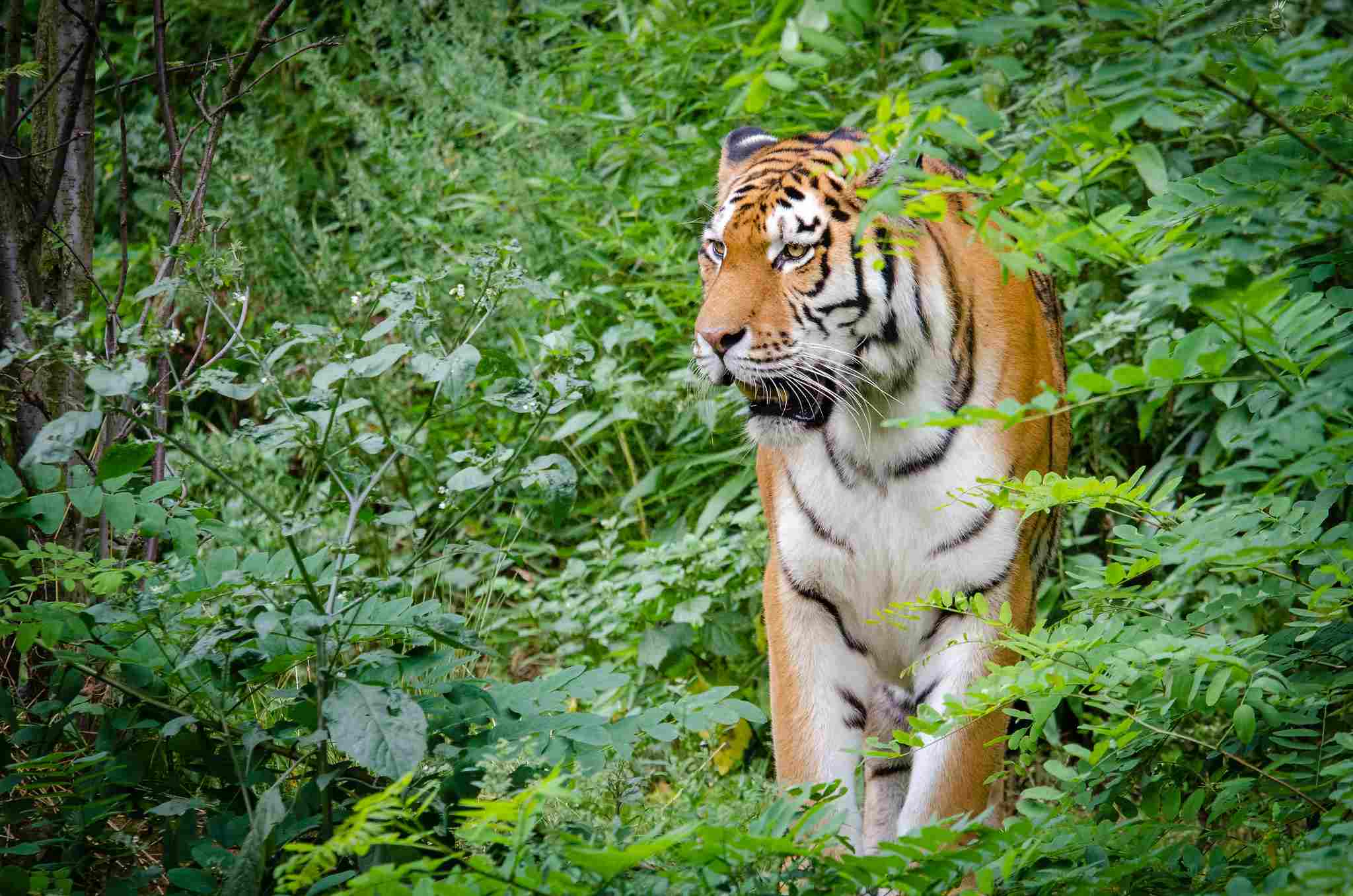
9). Lifespan
Tigers generally have a longer lifespan compared to leopards, with an average lifespan of 10 to 15 years in the wild and up to 20 years in captivity. Leopards, on the other hand, have an average lifespan of 12 to 17 years in the wild and up to 23 years in captivity.
The lifespan of both species can be influenced by factors such as habitat quality, availability of prey, and human interference. Tigers, being larger and more powerful, may have a slightly higher chance of survival in the wild. However, both tigers and leopards face threats such as habitat loss, poaching, and conflicts with humans, which can significantly impact their lifespan.
In captivity, both tigers and leopards can live longer due to the absence of natural predators and access to regular food and veterinary care. Zoos and conservation centers play a crucial role in ensuring the longevity of these magnificent big cats.
10). Behavior
When comparing the behavior of leopards and tigers, several key aspects come into play. One important factor is feeding behavior. Both leopards and tigers are carnivorous predators, but their hunting techniques differ. Leopards are known for their stealth and agility, often relying on their ability to climb trees to ambush their prey. Tigers, on the other hand, are more powerful and tend to rely on their strength to bring down larger prey.
Aggression is another aspect of behavior that sets these big cats apart. Tigers are generally more aggressive and territorial compared to leopards. They mark their territories with scent markings and vocalizations to ward off intruders. Leopards, although territorial as well, are known to be more adaptable and can tolerate overlapping territories with other leopards.
Vocalization is also an important aspect of their behavior. Tigers are known for their deep, resonant roars that can be heard over long distances. Leopards, on the other hand, have a wide range of vocalizations, including growls, hisses, and purrs.
In terms of social behavior, leopards are more solitary animals, while tigers are known to have a more social nature. Tigers can form small family groups consisting of a mother and her cubs, while leopards are typically solitary hunters.
When it comes to parenting, both leopards and tigers exhibit strong maternal instincts. Female leopards and tigers provide care and protection to their cubs until they are old enough to fend for themselves.
11). Reproduction
When comparing the reproduction of leopards and tigers, there are several key differences to consider. Both species are viviparous, meaning they give birth to live young. However, the gestation period differs between the two. Female leopards have a gestation period of approximately 90 to 105 days, while female tigers have a slightly longer gestation period of around 100 to 110 days.
In terms of litter size, leopards typically give birth to two to three cubs, although larger litters of up to six cubs have been recorded. Tigers, on the other hand, usually have litters of two to four cubs, with three being the most common.
The reproductive behavior of leopards and tigers also differs. Female leopards are known to be solitary during their reproductive period and will actively seek out a male for mating. Once mating occurs, the male has no involvement in raising the cubs. Tigers, on the other hand, have a more complex social structure. Mating occurs between a male and female tiger, and the male may stay with the female for a short period of time to protect her and the cubs.
12). Danger Posed to Humans
When considering the danger posed to humans by leopards and tigers, it is important to examine their behavior and proximity to human settlements. Both species have been known to come close to human habitats, especially when their natural prey is scarce. However, their aggression towards humans differs.
Leopards are generally more adaptable to living in close proximity to humans and have been known to enter villages and even urban areas in search of food. While they are generally elusive and avoid direct confrontation with humans, there have been instances of leopard attacks on humans, particularly when they feel threatened or cornered.
Tigers, on the other hand, tend to avoid human settlements and are less likely to come into direct contact with humans. However, when tigers do encounter humans, they can be more aggressive and pose a greater danger. Human deaths caused by tigers are relatively rare but can occur, especially in areas where human activities encroach upon their natural habitat.
If you encounter a leopard or tiger in the wild, it is important to exercise caution and take appropriate precautions. Avoid direct eye contact, make yourself appear larger, and slowly back away without turning your back on the animal. It is crucial not to run, as this may trigger their predatory instincts.
While both leopards and tigers can pose a danger to humans, tigers are generally more aggressive and have a higher potential for causing harm. It is essential to respect their space and take necessary precautions when encountering these magnificent predators in their natural habitats.
13). Intelligence
Leopards are known for their adaptability and resourcefulness. They have the ability to quickly learn and adapt to new environments, which allows them to thrive in a variety of habitats. Their intelligence is evident in their hunting techniques, as they are skilled at stalking and ambushing their prey. Leopards also display problem-solving skills when it comes to accessing hard-to-reach food sources or navigating challenging terrain.
Tigers, on the other hand, are known for their strategic thinking and complex social behaviors. They exhibit a higher level of intelligence compared to leopards, which is reflected in their hunting strategies. Tigers are known to study their prey’s behavior and adapt their hunting techniques accordingly. They also display social intelligence, as they establish and maintain territories, communicate through vocalizations, and exhibit complex social hierarchies.
Therefore, both leopards and tigers possess a high level of intelligence, but tigers exhibit a slightly higher level of cognitive abilities and social intelligence. Their strategic thinking and complex behaviors set them apart in terms of intelligence. However, it is important to note that intelligence can vary among individuals within each species, and further research is needed to fully understand the extent of their cognitive abilities.
14). Tracks
When comparing the tracks of leopards and tigers, there are some distinct differences that can help identify which animal left the mark. The tracks of both animals are characterized by their large size and powerful stride, but there are subtle variations to look out for.
Leopard tracks typically show a more rounded shape with four toes and a distinct pad. The toes are usually close together, giving the track a compact appearance. The pad is often wider at the back, creating a unique “M” shape. These tracks are commonly found in a variety of habitats, including forests, grasslands, and mountains.
On the other hand, tiger tracks are larger and more elongated compared to leopards. They also have four toes and a pad, but the toes are spaced farther apart, giving the track a more stretched-out appearance. The pad of a tiger track is usually more symmetrical and lacks the “M” shape seen in leopard tracks. These tracks are typically found in dense forests and grasslands.
By examining the tracks left behind, experts can determine the presence of either a leopard or a tiger in a particular area. These tracks provide valuable information about the animal’s size, movement, and habitat preferences. Understanding the differences in their tracks is crucial for conservation efforts and monitoring the populations of these magnificent big cats.
15). Conservation Status
When it comes to the conservation status of leopards and tigers, both species face significant challenges in the wild. They are both classified as “endangered” or “threatened” due to various factors that threaten their survival.
For leopards, habitat loss and fragmentation are major threats. As human populations expand and encroach upon their natural habitats, leopards are losing their homes and access to prey. Additionally, illegal hunting and poaching for their beautiful fur and body parts further contribute to their declining numbers.
Tigers, on the other hand, face similar threats but on a larger scale. Habitat loss, driven by deforestation and human activities, has resulted in a significant reduction in their natural range. Poaching for their skin, bones, and other body parts, driven by the illegal wildlife trade, remains a grave concern for tiger populations.
Both leopards and tigers play crucial roles in maintaining the balance of their respective ecosystems. Their decline can have far-reaching consequences for the biodiversity and overall health of these habitats.
Conservation efforts for both species involve a combination of measures, including protected areas, anti-poaching initiatives, and community engagement. Collaborative efforts between governments, conservation organizations, and local communities are essential to ensure the long-term survival of these magnificent big cats.

Conclusion
I). SIMILARITIES
In comparing leopards and tigers, it is evident that these magnificent big cats share several similarities. Both species face significant conservation challenges, being classified as “endangered” or “threatened.” Habitat loss and fragmentation, driven by human activities, pose a major threat to their survival.
Additionally, illegal hunting and poaching for their valuable fur and body parts further contribute to their declining populations. Both leopards and tigers play crucial roles in maintaining the balance of their respective ecosystems, highlighting the importance of their conservation efforts.
II). DIFFERENCES
While leopards and tigers share similarities, there are also notable differences between these two big cats. One significant difference lies in their size and weight. Tigers are generally larger and heavier than leopards, with adult males weighing up to 660 pounds compared to the leopard’s maximum weight of around 200 pounds.
Another difference is their habitat preference. Leopards are more adaptable and can thrive in various habitats, including forests, grasslands, and mountains, while tigers are primarily found in dense forests and grasslands. Additionally, tigers have a more solitary nature, while leopards are known to be more adaptable and can tolerate the presence of other individuals in their territories.
